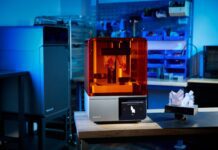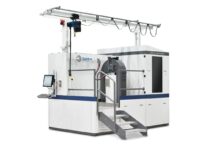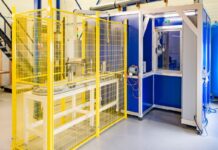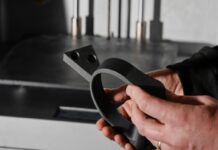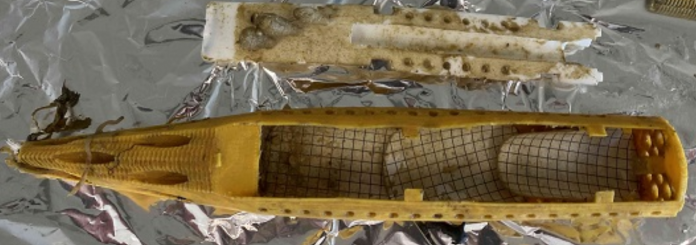
Researchers at Monash University, in partnership with local and international universities and industries, have developed an easy to use and cheap testing device that can detect SARS-CoV-2, the virus responsible for COVID-19, in wastewater in Victoria.
Called the ‘Torpedo Passive Sampler‘ or the ‘sewage submarine’ – the testing device consists of cotton buds, medical gauze swabs and lab grade electronegative membranes encased in a 3D printed shell.
“These results indicate that cotton buds, electronegative membranes and gauzes can be used as passive samplers of SARS-CoV-2 in human wastewater,” said Associate Professor McCarthy
“This is the first proof of concept that one or more of these passive samplers could be prime candidates for further optimisation to monitor for SARS-CoV-2 and for other problematic viruses in the future.”
Unlike other automatic sampling methods, the ‘Torpedo Passive Sampler’ is inexpensive (costing roughly $20 compared to >$5000 for each automatic sampler) to operate and capable of identifying small regions such as individual lots or suburbs for targeted health actions.
“This is why efficient and portable methods are needed. The portability and size of the ‘torpedo’ means we can be more targeted in testing wastewater and narrow down the areas where people are likely to be shedding the virus, such as a suburb or aged care facility.”
“Above all, the ‘torpedo’ is cheap, easy to use, and provide more consistent results than other sampling methods.”
The passive sampling technology, which was conceptualized by Melbourne Water’s Dr Nicholas Crosbie, absorbs traces of the virus as wastewater passes through the shell. Samples are then taken into the lab for analysis.
“This discovery is exciting and ground-breaking as it can fundamentally change the way we detect critical virus spread in our community, and can help with targeted health care actions,” Associate Professor McCarthy added.
Wastewater sampling is one way to track and trace virus presence as people infected with COVID-19 tend to excrete the SARS-CoV-2 virus through faeces, via coughing or sneezing.
Intellectual property of the device is open, with over 2500 3D printing files issued globally to governments and health professionals to date.
“We can also offer these solutions to communities globally that are in desperate need of cheap and easy to use methods to help curb the spread of this virus,” Associate Professor McCarthy said.


